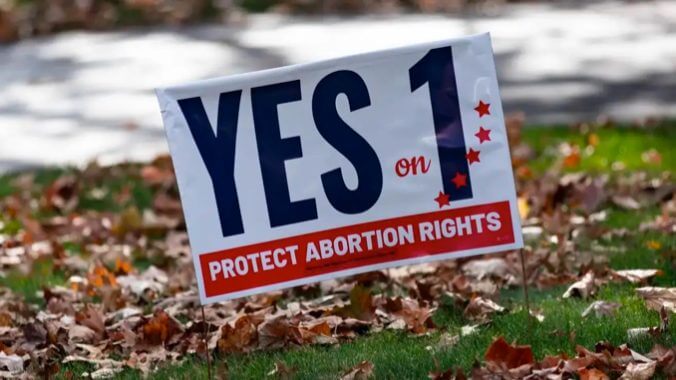Ohio Supreme Court Rejects State’s Plea to Enforce 6-Week Ban
If the tactics of Ohio Republicans show us anything, it’s that the broad popularity of abortion rights has anti-abortion politicians terrified.
An Issue 1 campaign sign outside a polling location in Toledo, Ohio, on Nov. 7, 2023Photo: Getty Images Abortion Ohio
Weeks after Ohio overwhelmingly voted to enshrine a right to abortion in the state Constitution, abortion rights have secured another important win: On Friday, the state Supreme Court dismissed a demand from the state to be able to enforce its six-week ban, which has been blocked by an injunction from a lower court in Hamilton County since September 2022. Explaining their decision to dismiss the state’s appeal, the state Supreme Court justices cited “a change in the law,” apparently referring to the successful abortion rights ballot measure, Issue 1.
When Issue 1 won at the ballot box last month, the state Supreme Court had been considering Ohio’s ongoing appeal against the lower court’s injunction. After the ballot measure passed, the Supreme Court asked both Ohio and abortion clinics (represented by the ACLU of Ohio) to file briefs explaining how the passage of Issue 1 affected the ongoing case. The court’s Friday ruling now moves the case back down to the lower court in Hamilton County—the same court that blocked the ban from taking effect last September—where a judge will decide whether to throw out the ban altogether given last month’s election results.
-

-

-

-

-

-

-

-

-

-

-

-

-

-

-

-

-

-

-

-

-

-

-

-

-

-

-

-

-

-

-

-

-

-

-

-

-

-

-

-








































